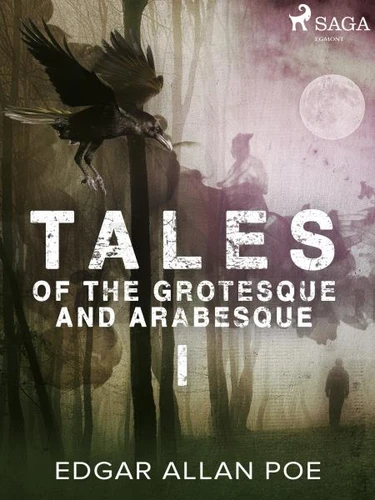Edgar Poe (1809-1849) commence à écrire en 1829. Considéré comme un poète maudit, ses écrits cauchemardesques et fantastiques sont aujourd'hui considérés comme précurseurs du surréalisme. C'est grâce aux traductions de Charles Baudelaire qu'il est connu en France.
Tales of the Grotesque and Arabesque I
Par :Formats :
Disponible dans votre compte client Decitre ou Furet du Nord dès validation de votre commande. Le format ePub est :
- Compatible avec une lecture sur My Vivlio (smartphone, tablette, ordinateur)
- Compatible avec une lecture sur liseuses Vivlio
- Pour les liseuses autres que Vivlio, vous devez utiliser le logiciel Adobe Digital Edition. Non compatible avec la lecture sur les liseuses Kindle, Remarkable et Sony
 , qui est-ce ?
, qui est-ce ?Notre partenaire de plateforme de lecture numérique où vous retrouverez l'ensemble de vos ebooks gratuitement
Pour en savoir plus sur nos ebooks, consultez notre aide en ligne ici
- Nombre de pages92
- FormatePub
- ISBN978-87-26-58688-6
- EAN9788726586886
- Date de parution26/08/2020
- Protection num.Digital Watermarking
- Taille543 Ko
- Infos supplémentairesepub
- ÉditeurSAGA Egmont
Résumé
From the mysterious marriage in "Morella", to the satirical and secretive vistas of "The Man That Was Used Up", or the depressed Roderick Usher, the reader is facing the first volume of E. A. Poe's tales. Teeming with melancholy and vampirism, verging on the sanity's uttermost rim, Poe's characters often fall victims to supernatural happenings. Men wishing for their wife's deaths, doppelgangers and hollow men, or bargains with the Devil - all these elements reveal the need for Poe's protagonists to discuss, mock, and curse their (ab)normal predicaments.
E.
A. Poe's immortal heritage in the horror genre is unquestionable and if the reader is not quite familiar with the atmosphere depicted, they could always give Roger Corman's movies from the Poe cycle a try: "House of Usher" (1960), "Pit and the Pendulum" (1961), "The Tomb of Ligeia" (1964) - all starring Vincent Price.
A. Poe's immortal heritage in the horror genre is unquestionable and if the reader is not quite familiar with the atmosphere depicted, they could always give Roger Corman's movies from the Poe cycle a try: "House of Usher" (1960), "Pit and the Pendulum" (1961), "The Tomb of Ligeia" (1964) - all starring Vincent Price.
From the mysterious marriage in "Morella", to the satirical and secretive vistas of "The Man That Was Used Up", or the depressed Roderick Usher, the reader is facing the first volume of E. A. Poe's tales. Teeming with melancholy and vampirism, verging on the sanity's uttermost rim, Poe's characters often fall victims to supernatural happenings. Men wishing for their wife's deaths, doppelgangers and hollow men, or bargains with the Devil - all these elements reveal the need for Poe's protagonists to discuss, mock, and curse their (ab)normal predicaments.
E.
A. Poe's immortal heritage in the horror genre is unquestionable and if the reader is not quite familiar with the atmosphere depicted, they could always give Roger Corman's movies from the Poe cycle a try: "House of Usher" (1960), "Pit and the Pendulum" (1961), "The Tomb of Ligeia" (1964) - all starring Vincent Price.
A. Poe's immortal heritage in the horror genre is unquestionable and if the reader is not quite familiar with the atmosphere depicted, they could always give Roger Corman's movies from the Poe cycle a try: "House of Usher" (1960), "Pit and the Pendulum" (1961), "The Tomb of Ligeia" (1964) - all starring Vincent Price.






















